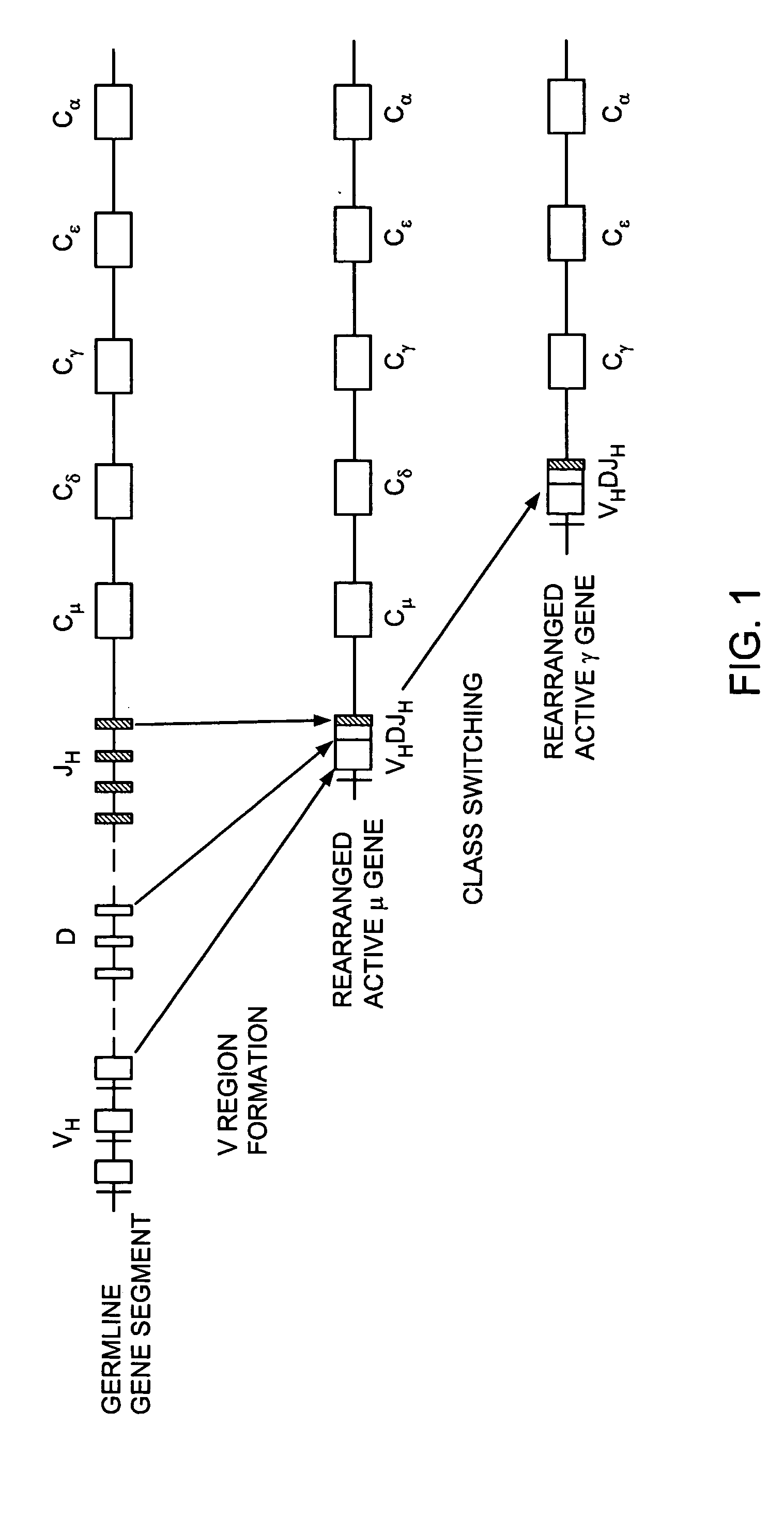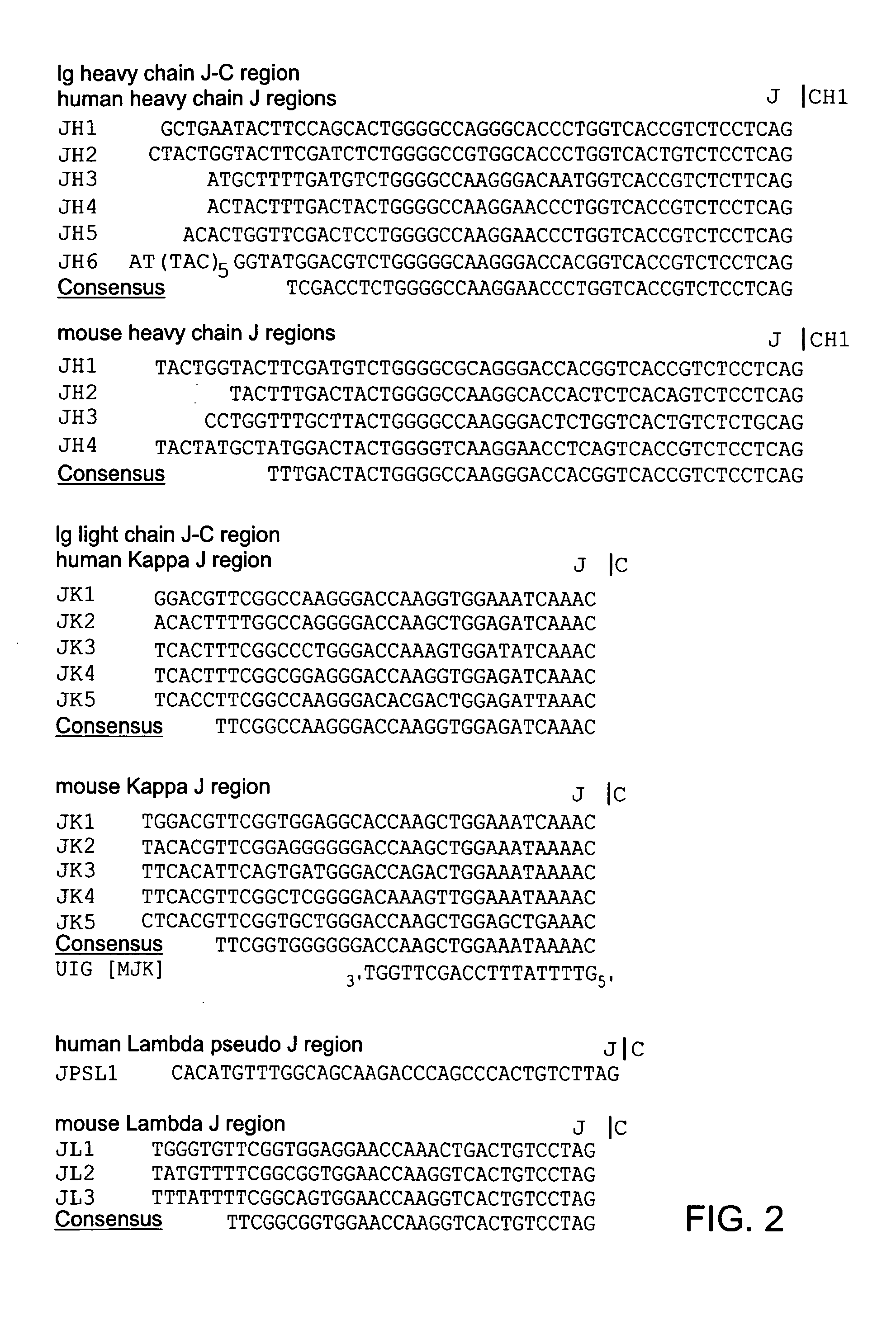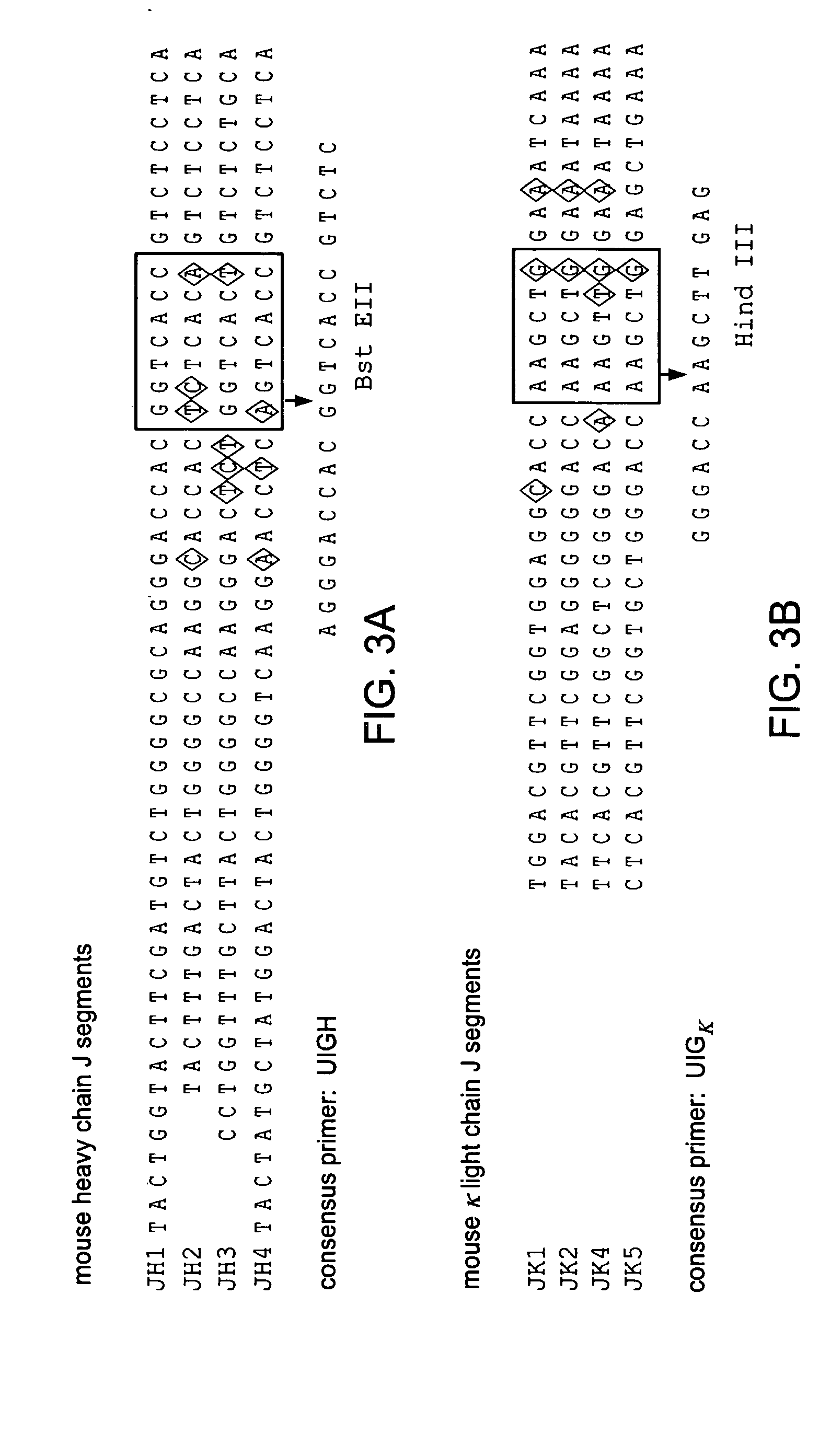Chimeric antibody with specificity to human B cell surface antigen
a chimeric antibody and b cell surface technology, applied in the field of recombinant dna, can solve the problems of harmful hypersensitivity reactions, increased clearance rate of circulating antibody molecules, and many obstacles to the development of human monoclonal antibodies
- Summary
- Abstract
- Description
- Claims
- Application Information
AI Technical Summary
Benefits of technology
Problems solved by technology
Method used
Image
Examples
example 1
A Chimeric Mouse-Human Immunoglobulin with Specificity for a Human B-Cell Surface Antigen
[0137] (1) Antibody 2H7.
[0138] The 2H7 mouse monoclonal antibody (gamma 2b, kappa) recognizes a human B-cell surface antigen, (Bp35(CD20)) Clark, E. A., et al., Proc. Natl. Acad. Sci., U.S.A. 82: 1766 (1985)). The (Bp35(CD20)) molecules presumably play a role in B-cell activation. The antibody 2H7 does not react with stem cells which are progenitors of B-cells epithelial, mesenchymal and fibroblastic cells of other organs.
[0139] (2) Identification of J Sequences in the Immunoglobulin mRNA of 2H7.
[0140] Frozen cells were thawed on ice for 10 minutes and then at room temperature. The suspension was diluted with 15 ml PBS and the cells were centrifuged down. They were resuspended, after washes in PBS, in 16 ml 3M LiCl, 6M urea and disrupted in a polytron shear. The preparation of mRNA and the selection of the poly(A+) fraction were carried out according to Auffray, C. and Rougeon, F., Eur. J. B...
PUM
| Property | Measurement | Unit |
|---|---|---|
| pH | aaaaa | aaaaa |
| pH | aaaaa | aaaaa |
| pH | aaaaa | aaaaa |
Abstract
Description
Claims
Application Information
 Login to View More
Login to View More - R&D
- Intellectual Property
- Life Sciences
- Materials
- Tech Scout
- Unparalleled Data Quality
- Higher Quality Content
- 60% Fewer Hallucinations
Browse by: Latest US Patents, China's latest patents, Technical Efficacy Thesaurus, Application Domain, Technology Topic, Popular Technical Reports.
© 2025 PatSnap. All rights reserved.Legal|Privacy policy|Modern Slavery Act Transparency Statement|Sitemap|About US| Contact US: help@patsnap.com



